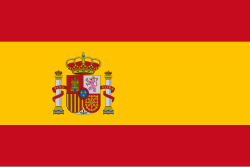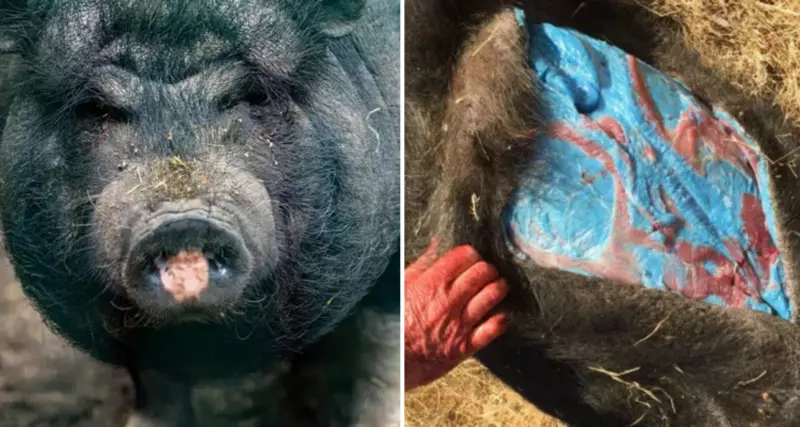A disturbing discovery has turned on the alarms in California: hunters have found wild pigs whose meat and fat exhibit a neon blue fluorescence that challenges all natural explanation. The finding, which at first seemed like a strange phenomenon, turned out to be a very real danger.
The first time Dan Burton, an expert in wildlife control, saw this phenomenon in March, could not believe what he had before his eyes. “I’m not talking about a little blue. I’m talking about neon blue, blueberry blue,” he told Los Angeles Times. “It’s crazy.”
Blue meat pigs
The finding took place near Salinas, in Monterey County, where Burton had captured several copies as part of his routine work. When processing animals, the intense anti -natural coloration of both muscle tissue and adipose fat left it dumbfounded.
His instinct dictated immediately contact the Department of Fishing and Wildlife of California (CDFW), a decision that uncovered a more serious environmental problem than expected.
After an exhaustive research, the Wild Fauna Health Laboratory of the CDFW and the California Animal and Food Safety Laboratory in Davis identified the culprit: an anticoagulant rodenticide called the deceased.
This poison, widely used in agriculture for the control of rodents, is deliberately dyed in bright blue as a security measure so that humans can easily identify and avoid it. However, wild animals do not recognize these warning signs created by humans.
Although it is not the first time that this type of pollution is detected, the case has generated special attention due to the striking of color and because of the risk it represents for human health.
According to the CDFW, this type of rodenticides can also affect predators who consume the poisoned animals – including humans – since the substance remains active in the tissues even after being cooked.
According to Los Angeles Times, laboratory tests showed that animals were exposed to the poison “for a prolonged period.” Although the doses in the traps are lethal for small animals to which they are destined, they are not large enough to cause immediate damage to pigs, which usually weigh between 45 and 90 kg.
The deceased acts as an anticoagulant, causing serious internal hemorrhages by joining the enzymes that recycle vitamin K, which affects blood coagulation capacity. The effects are not instantaneous; Death usually occurs several days after initial ingestion, a period during which the animal becomes more vulnerable to predators, which multiplies its impact on the food chain.
Already in 2018, a CDFW study found surrounding remains in 8.3 percent of the wild pigs analyzed in California and a worrying 83 percent of the samples of bears, especially in areas close to rats control projects.
Wild pigs, which are actually hybrid between wild boars and domestic pigs, feed on almost everything they find, including poisoned baits or dying rodents. This makes them a key link in the involuntary propagation of toxic.
The use of deceased in California has been restricted since 2024, allowing only certified technicians. However, poison remains continue to appear in local fauna. For the authorities, this is a warning: if the pig is blue, something is going wrong, but even those that do not show visible signs could be contaminated.
With information from César Vega Martínez, journalist from the Magazine area in Biobiochile
- Acinox in Holguin Expands Product Sales - 28 de November de 2025
- The University of Medical Sciences Receive an Excellence Accreditation - 28 de November de 2025
- A Happy and Fulfilled Woman in the Laboratory - 28 de November de 2025

